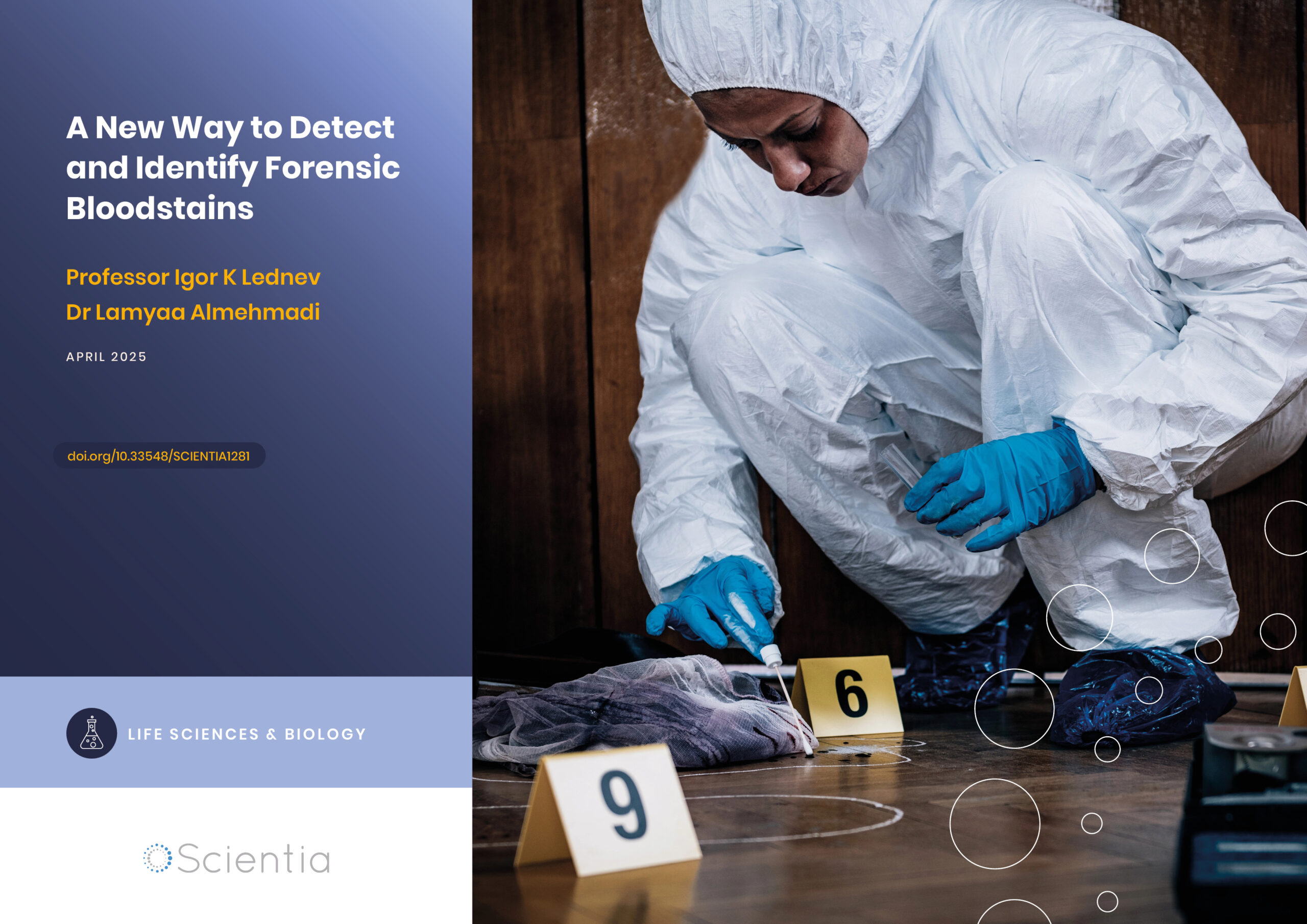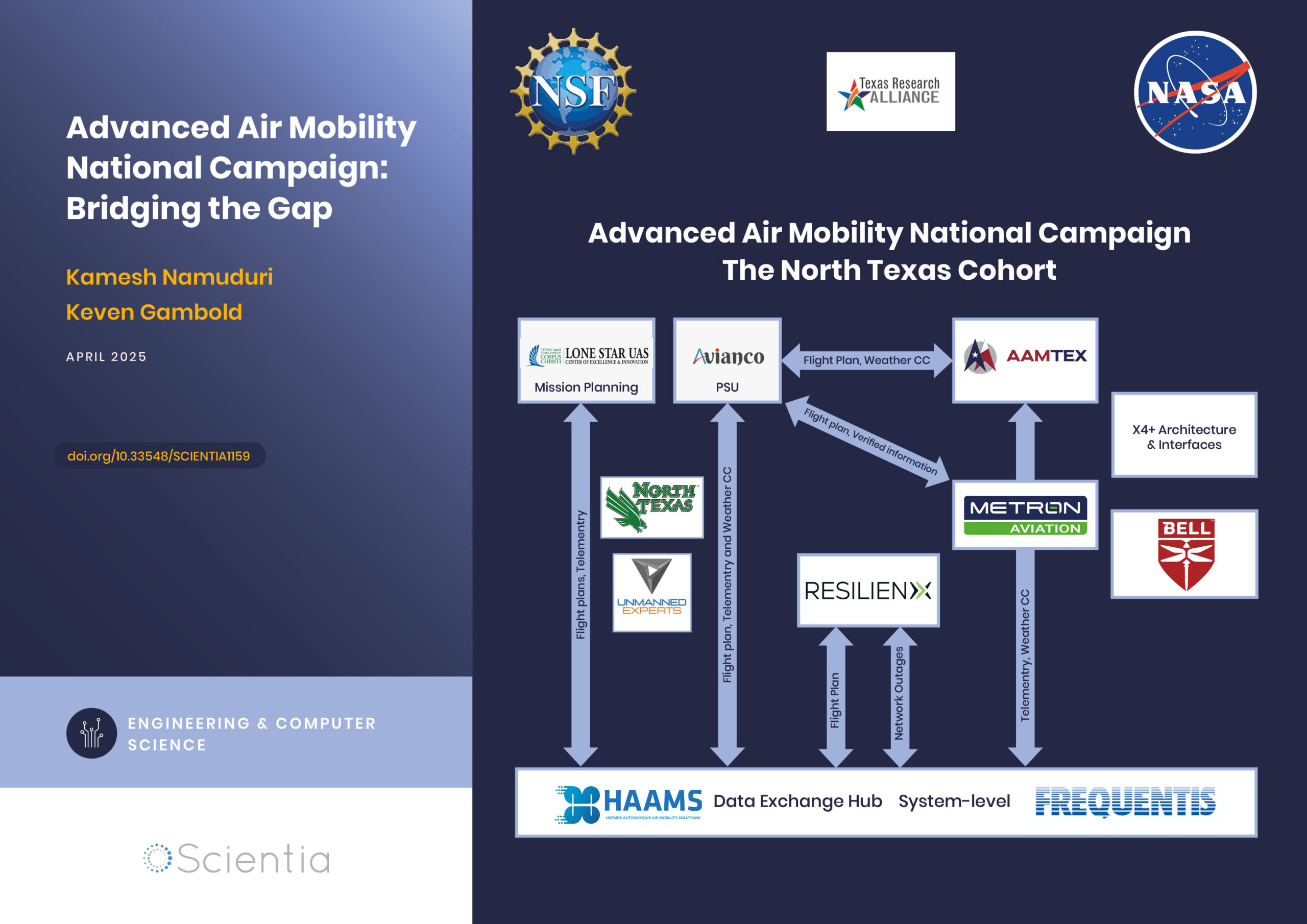Dr Devin Coleman-Derr – Beneficial Microorganisms to Help Plants Tolerate Drought
The incidence and severity of droughts continue to increase across the globe, posing a significant threat to agricultural productivity and our ability to feed a rapidly increasing human population. However, drought-stressed plants encourage a shift in the microorganism communities surrounding their roots, which in turn may help the plants to tolerate drought conditions. By harnessing this system, Dr Devin Coleman-Derr and his team at the USDA Agricultural Research Service and University of California, Berkeley, aim to develop microbial-based treatments to improve the drought tolerance and productivity of important crop species.
A Growing Threat
Drought is one of the greatest threats to our agriculture. In the USA alone, droughts have caused economic losses of billions of dollars over the past few decades, in large part due to crop failure and decreased crop yields. Unfortunately, the incidence and severity of drought is expected to rise over the coming decades due to climate change, further exacerbating the difficulties of feeding a growing human population.
However, plants, such as our food crops, are not passive bystanders in their ecosystems. While they cannot uproot themselves and move somewhere more suitable, they have the ability to respond to environmental challenges and counteract some of the detrimental effects of stressors such as decreased water-availability.
Scientists have recently discovered that plants can even alter their microbiome – the community of microorganisms surrounding their roots – in response to environmental stressors. The composition of the plant microbiome may be crucial in maintaining plant health under different growing conditions.
Dr Devin Coleman-Derr and his team at the University of California, Berkeley, have been investigating the mechanisms that plants use to change their microbiomes, and the consequences that this has for drought tolerance, plant health, and productivity. By understanding these processes, the team aims to develop microbial-based treatments that alter crop microbiomes to confer beneficial traits such as drought tolerance.
Such treatments could help maintain crop productivity without the need to develop new drought-tolerant plant varieties. They would also reduce or replace the chemical fertilisers and pesticides that are currently used to maintain crop productivity during periods of drought, decreasing the negative environmental impacts of agriculture and increasing sustainability and soil health.

Counteracting Drought Stress
To feed a burgeoning global human population, it is predicted that global food supply will need to increase by 70%. However, an increase in the incidence and severity of droughts and other extreme weather events compound this challenge by reducing agricultural productivity.
Farmers have responded to this major problem by cultivating greater areas of land, while also using greater quantities chemical fertilisers to counteract the decreased yield and pesticides to mitigate the reduced resilience of drought-stressed plants to pests and diseases. In some regions, farmers have resorted to cultivating arid and semi-arid land to maintain crop production levels, because of a lack of suitable farmland.
Traditionally, the predominant method to counteract these effects was the development of new plant varieties that had greater yields and could withstand specific environmental stressors. But producing new varieties with the required characteristics is time-consuming and labour-intensive, and is not optimal for adapting to new challenges as they arise, or to the distinct agricultural ecosystems found in different areas.
Plant microbiomes may offer a solution that does not rely on producing multiple new crop varieties to mitigate each arising challenge. Both natural and cultivated plants possess their own microbiome, which changes according to the particular conditions in which the host plant is grown.

‘Many of the microorganisms offer benefits to the host, improving nutrient uptake, preventing pathogen attack, and increasing plant growth under adverse environmental conditions,’ says Dr Coleman-Derr. ‘In return these microorganisms receive shelter from the surrounding environment and access to a carbon-rich food supply.’
By harnessing these beneficial microorganisms, treatments could be developed that improve yield and confer drought tolerance to a range of plants, without the need to individually develop new varieties of each crop species. Indeed, plants treated (or ‘inoculated’) with mixtures of microorganisms obtained from other plants that have been grown under drought conditions, show improved drought tolerance, even when the two plant species are different. ‘The ability to transfer stress-resistance solutions from one crop species to another through a microbial inoculum has the potential to save years of plant breeding effort,’ states Dr Coleman-Derr.
Additionally, many of the beneficial microorganisms improve the resistance of their host plants to more than one environmental stressor. In arid and semi-arid farmland, crops are often subjected to multiple concurrent stressors, such as drought, heat, salinity and poor nutrient availability.
‘The ability to transfer stress-resistance solutions from one crop species to another through a microbial inoculum has the potential to save years of plant breeding effort.’

Encouraging Helpful Bacteria
Dr Coleman-Derr and his colleagues have been comparing the relative abundance of bacteria in the root microbiome of plants grown under normal versus drought conditions, in many of our staple crops – wheat, barley, oat, maize, sorghum and millet.
Under normal conditions, the team found that Gram negative bacteria – a bacterial class with a thin lipid bilayer membrane as its outer surface – are dominant in the microbiome composition. But under drought conditions, Gram positive bacteria – which are encased by a thick and relatively more impermeable cell wall – are relatively more abundant.
Gram positive bacteria are more resistant to desiccation than their Gram negative counterparts, but Dr Coleman-Derr and his colleagues demonstrated that this shift in the microbiome composition is not due to soil moisture levels alone. They found that differences in the relative abundance of Gram positive and Gram negative bacteria were minimal when measured in control soils under varying moisture levels. However, they observed a marked increase in the relative abundance of Gram positive bacteria in the soils surrounding plant roots when grown in drought conditions. This highlights the plant-mediated response of the microorganisms in the microbiome, driven by the plant’s responses to environmental stressors.
This microbiome control is facilitated through the production and release of substances into the surrounding soils by the plants themselves. Dr Coleman-Derr and his team have identified two key plant-produced substances that may alter the microbiome composition under drought stress. The first, a type of ester derived from glycerol, is used in development of new bacterial cell walls, and thus positively regulates the abundance of Gram positive bacteria within the plant microbiome. The second, a reactive oxidative substance, is particularly damaging to the outer cell membrane of Gram negative bacteria, and thus negatively regulates their abundance within the microbiome.
Based on previous findings, Dr Coleman-Derr and his team suggest that a greater relative abundance of Gram positive bacteria may improve drought tolerance in plants. A particular group of Gram positive bacteria called Actinobacteria, which were in much higher levels in the microbiomes of sorghum plants grown under drought conditions, have been shown in certain cases to improve growth and general plant health by boosting disease resistance, enhancing nitrogen availability, and regulating plant growth.
In another experiment, Dr Coleman-Derr and his team measured a 30% increase in the root growth of sorghum seedlings grown under drought conditions when they had been inoculated with a type of Gram positive Actinobacteria.

The Future of Microbiome Treatments
Whilst the results of these investigations are promising, Dr Coleman-Derr has identified key areas for his team and other scientists to pursue further. To further understand the mechanisms behind the microbiome shifts and associated drought tolerance, Dr Coleman-Derr and his team are delving into the genetics of the microorganisms involved.
By isolating a subset of the Gram positive bacteria that are enriched during periods of drought, the team hopes to identify the key genes responsible for the drought tolerance characteristics conferred by the microbiome to the plant. This may offer additional opportunities to develop microbial-based agricultural treatments on a large scale.
Another branch of the team’s current research involves testing how similar the known regulatory substances produced by plants are across different plant species, and identifying additional microbiome-regulating substances produced under drought stress. ‘Provoking changes in plant metabolism could allow for indirect control over microbiome structure, without the need for inoculation,’ explains Dr Coleman Derr. ‘Many simple drought-induced compounds, including sugars and amino acids, may be partially responsible for Gram positive enrichment, and direct application of these compounds could allow for programmable enrichment at the onset of, or even prior, to drought stress.’
Finally, Dr Coleman-Derr and his team are also extending their research from the laboratory to the field, with the aim of refining the best method of inoculating crops with beneficial microorganisms, and the impact that this has on drought resistance in crops grown in whole agricultural systems. Ideally, in the future, the technologies they are developing will be transferable to a range of crop species, robust enough for use across various regions of the world, and able to be optimised for the specific growing conditions of that area.
With climate change, and in particular, droughts, posing a significant threat to our ability to meet the food demands of the growing human population, microbial-based treatments may form an integral part of the arsenal we use to sustain crop production into the future.
Reference
https://doi.org/10.33548/SCIENTIA416
Meet the researcher

Dr Devin Coleman-Derr
Plant Gene Expression Center, USDA-ARS
Plant and Microbial Biology Department
University of California
Berkeley, CA
USA
Dr Devin Coleman-Derr earned his PhD in Plant Biology from the University of California, Berkeley, and he currently holds the position of Research Scientist at the Plant Gene Expression Center, a 30-year collaborative effort between the USDA Agricultural Research Service and the Plant and Microbial Biology Department of the University of California. His team’s research focuses on the effects of abiotic stress factors on the microbiomes associated with crop species, and the development of new tools and methods to promote drought tolerance and other beneficial characteristics in plants. Dr Coleman-Derr’s work has been published in many esteemed journals, and he has been invited to present his research at prestigious conferences across the world. In addition, he devotes time to teaching courses in plant genetics and computational biology, and advises multiple PhD candidates.
CONTACT
E: devin.coleman-derr@ars.usda.gov
W: https://pgec.berkeley.edu/dcoleman-derr
KEY COLLABORATORS
Sunderesan Venketesan, University of California at Davis
Peggy Lemaux, University of California at Berkeley
John Taylor, University of California at Berkeley
Jeffery Dahlberg, Kearney Agricultural Research and Extension Center
FUNDING
USDA-ARS
USDA-NIFA
DOE-BER
FURTHER READING
L Xu, D Coleman-Derr, Causes and consequences of a conserved bacterial root microbiome response to drought stress, Current Opinion in Microbiology, 2019, 49, DOI: 10.1016/j.mib.2019.07.003.
L Xu, D Naylor, Z Dong, T Simmons, G Pierroz, KK Hixson, Y-M Kim, EM Zink, KM Engbrecht, Y Wang, C Gao, S DeGraaf, MA Madera, JA Sievert, J Hollingsworth, D Birdseye, HV Scheller, R Hutmacher, J Dahlberg, C Jansson, JW Taylor, PG Lemaux, D Coleman-Derr, Drought delays development of the sorghum root microbiome and enriches for monoderm bacteria, Proceedings of the National Academy of Sciences, 2018, 115, E4284.
D Naylor, S DeGraaf, E Purdom, D Coleman-Derr, Drought and host selection influence bacterial community dynamics in the grass root microbiome, The ISME Journal, 2017, 11, 2691.
D Coleman-Derr, SG Tringe, Building the crops of tomorrow: advantages of symbiont-based approaches to improving abiotic stress tolerance, Frontiers in Microbiology, 2014, 5, 283.


Creative Commons Licence
(CC BY 4.0)
This work is licensed under a Creative Commons Attribution 4.0 International License. 
What does this mean?
Share: You can copy and redistribute the material in any medium or format
Adapt: You can change, and build upon the material for any purpose, even commercially.
Credit: You must give appropriate credit, provide a link to the license, and indicate if changes were made.
More articles you may like
International Isocyanate Institute | TDI-induced Asthma: Reanalysing Data to Find Hidden Trends
Even if you’ve never heard of them, you’ve used polyurethanes. Producing them requires toluene diisocyanates, which may/can induce asthma when inhaled. A 5-year study claimed to conclude that cumulative TDI exposure over time was indicative of asthma incidence. However, a reanalysis by a team at the International Isocyanate Institute points the finger instead at the frequency of unprotected high-exposure events, like accidental spills or plant maintenance. This finding guides the way for future advances in worker safety.
A New Way to Detect and Identify Forensic Bloodstains
Accurately identifying bodily fluids at crime scenes is vital to aid forensic examinations and obtain information for use in criminal proceedings. However, collecting viable material for analysis can be challenging, especially if samples are difficult to access or the amount is minute. Dr Lamyaa Almehmadi and Professor Igor K Lednev at the University at Albany, State University of New York, USA, have introduced a new technique to assist in analysing bloodstains for forensic examination without compromising sample integrity.
Advanced Air Mobility National Campaign: Bridging the Gap
The rapid advancements in technology have paved the way for revolutionary changes in transportation, particularly air mobility. One such groundbreaking initiative is the Advanced Air Mobility (AAM) National Campaign led by NASA. This campaign aims to integrate advanced air mobility solutions into the existing transportation infrastructure, creating a seamless, efficient, and safe urban air transportation system. By addressing the various challenges associated with urban air mobility, the AAM National Campaign is poised to redefine how we navigate our cities, ultimately leading to reduced congestion, improved accessibility, and enhanced environmental sustainability.
Dr Niloofar Vardian | Mapping the Unknown: Inside Black Holes
Dr Niloofar Vardian at the SISSA school has advanced our understanding of black hole interiors through precise mathematical modelling. Her recent publication sheds light on previously inaccessible aspects of black hole dynamics, deepening our knowledge of these mysterious and difficult-to-study phenomena.




